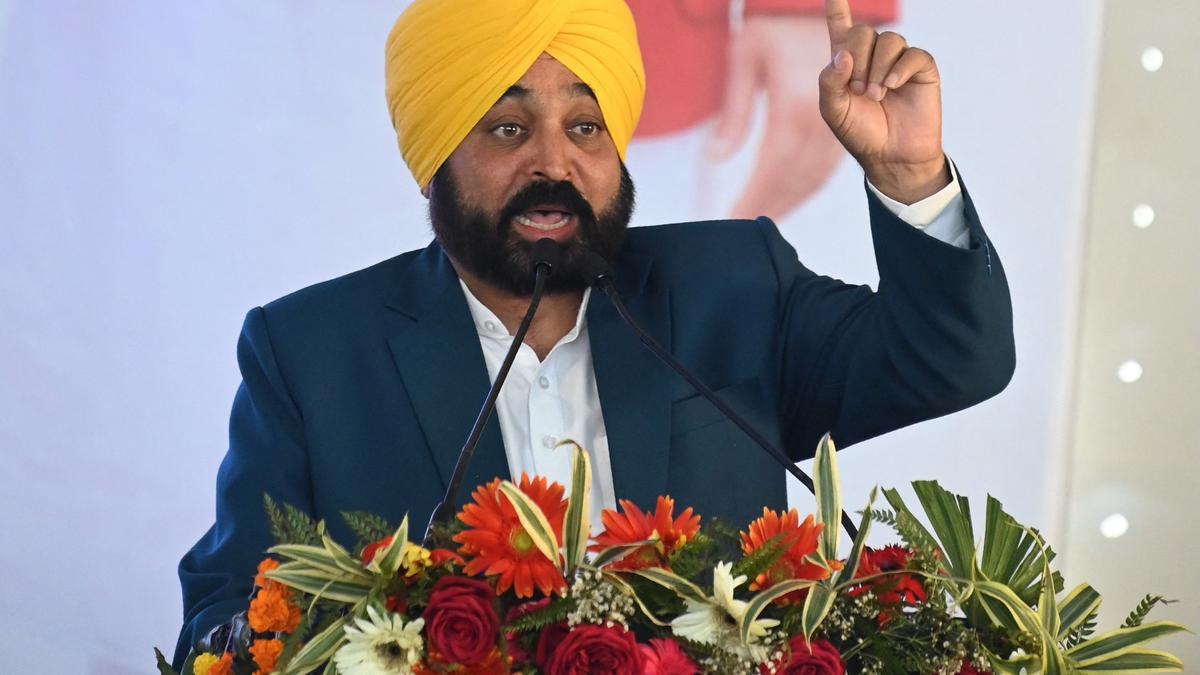
Punjab’s financial mess — ‘Cause of worry is that AAP govt. not showing any perceptible departure from past practices’
The Hindu
Punjab’s outstanding debt is more than 50% of its GDP, and more than four times its revenue for financial year 2022-23.
As the Aam Aadmi Party (AAP)-led government in Punjab is nearing one year in power, the key challenge to address the ever-worsening financial crisis remains a headache, ahead of the State’s annual Budget for the year 2023-24, slated to be presented on March 10.
Noted economists from the State have time and again raised concerns surrounding the State’s financial health, pointing out the fact that the Punjab economy is passing through a deep economic and financial crisis, and flagged fears surrounding the existing and ‘guaranteed freebies’.
According to a report from the Reserve Bank of India (RBI), Punjab is amongst the few States in the country which are under high public debt. Punjab’s outstanding debt is more than 50% of its Gross Domestic Product (GDP), and more than four times its revenue for the financial year 2022-23. The amount of debt-servicing (payment of principal and interest) consumed 99.44% of its gross borrowing of ₹32,258 crore, in 2020-21. It means that the debt is being serviced by taking an additional loan.
“Clearly, the Punjab government is in a debt trap. The existing (giving 300 units of free electricity etc.) and the ‘guaranteed’ (yet to be honoured) freebies-subsidies (giving ₹1,000 financial assistance to all women aged 18 or above etc.) are likely to eat up approximately 30% of the total revenue receipts of the government. It is not only increasing the revenue deficit and fiscal deficit but is also limiting the government’s capacity to incur capital expenditure, and is impairing the quality of governance. Due to the ever-increasing outstanding debt and under-mobilisation of financial resources, Punjab’s revenue deficit is the highest, and fiscal deficit is the second highest among the 17 general category States,” noted economist Ranjit Singh Ghuman, currently professor of eminence (Economics) at Guru Nanak Dev University, Amritsar, told The Hindu.
“All this has been due to the decelerating growth rate for well over four decades which in turn is the consequence of low investment-GSDP ratio, low credit-deposit ratio, and under mobilisation of financial resources and their imprudent use,” he said, pointing out while it was not the making of the AAP government but now the onus lay on it to ship the State out of troubled waters.
“Ironically, the previous governments have been largely in denial mode while the political parties have been indulging in and perpetuating irrational competitive political-populism instead of having any credible road map for the revival of the economy. Paradoxically, the real cause of worry is that the AAP government, too, is hesitating to learn any lessons and hence is not showing any perceptible departure from past practices. Its efforts to curb corruption and generate some limited employment opportunities along with some other positive steps are appreciative, but there is little to show on the economic revival and curb the financial profligacy,” he said.
The end of the Goods and Service Tax-compensation-regime and the Union government’s recent decision regarding cutting down grain procurement charges, is going to add to the State’s financial crisis. “To set the House in order, a consolidated fund of Punjab needs to be augmented by exploiting the entire potential of financial resources and the judicious use thereof. This is the necessary condition while firm politico-bureaucratic commitment to development is the sufficient condition for reviving the economy. This would require curbing tax evasion and rationalise the ‘freebies and subsidies’. Barring the deserving sections of the population, everybody else should be charged at least some minimum user-cost, may be at differential rates,” he said.













